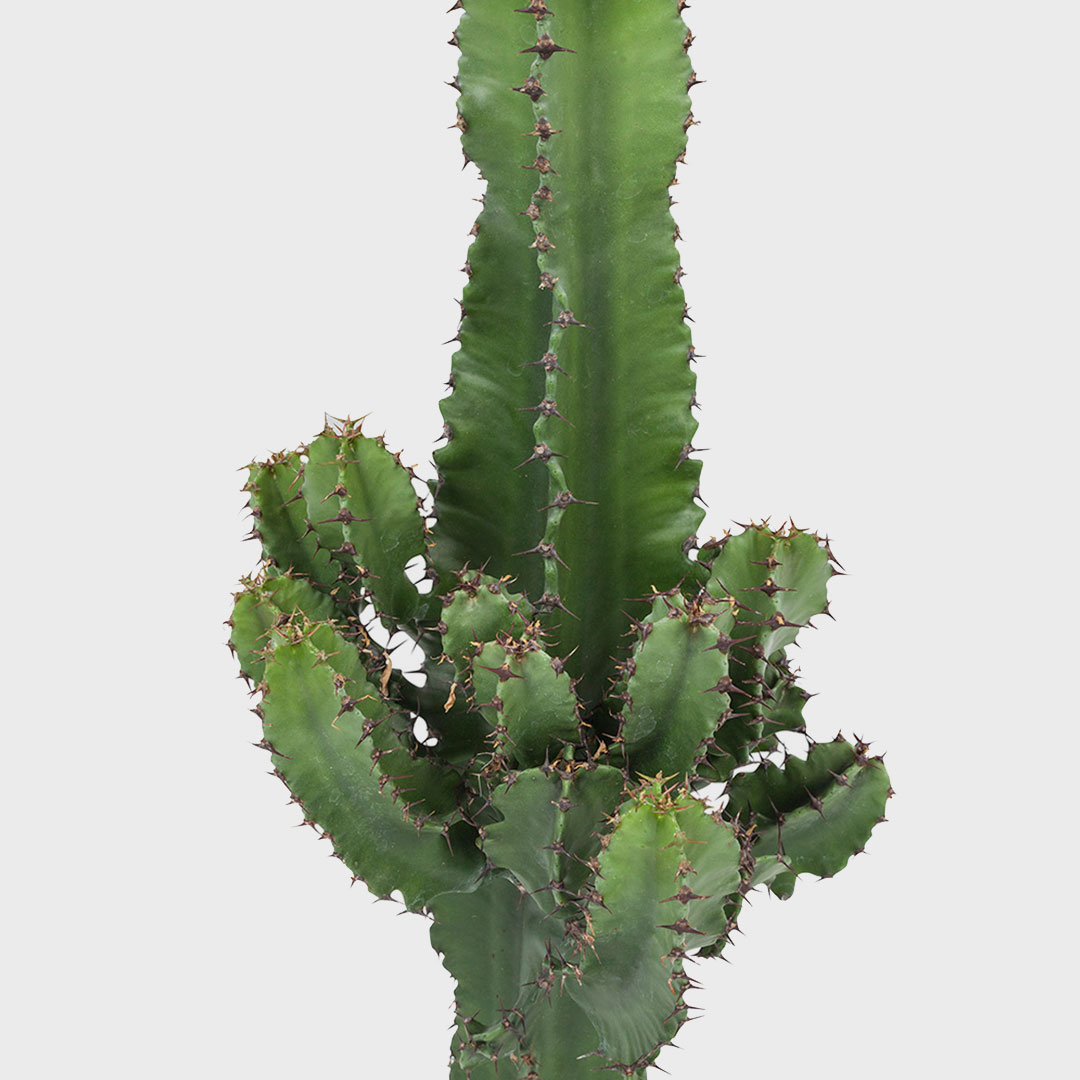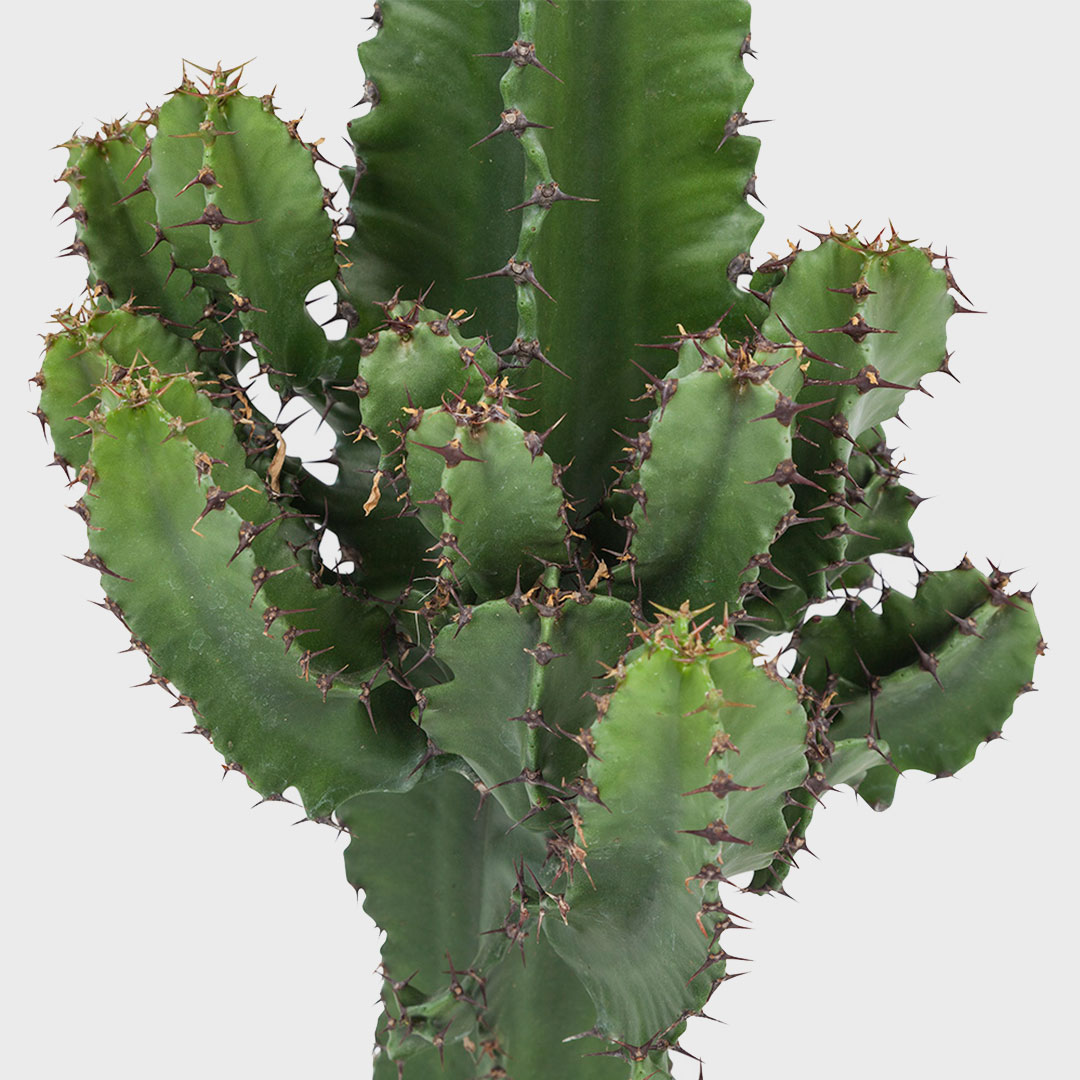
Deliver to
Europe
 English
English

Even though the Euphorbia looks like a cactus, there's a difference. A Cactus doesn’t have spurge, while the Euphorbia does. Since there are 2000 different types of the Euphorbia, they include many different kinds of texture such as cactus, herbs, or shrubs. Some varieties have flowers on them, but all of the plants have a spurge which can be poisonous to ingest and irritating for the skin. All you need to do is wear gloves when handling pruning or propagating to avoid contact with the skin.
Medium light
Water once a month
Toxic
Non Air-purifying
An Euphorbia can grow on almost every location. From bright light to partial shade. The optimum light for an Euphorbia depends on the type of Euphorbia.
If your Euphorbia turns yellow or orange the plant gets too much light. It's best to position the plant on a location with less (bright) light.
When the Euphorbia gets small leaves the plant is positioned on the right location.
Being a desert plant, there’s a common misconception that an Euphorbia doesn’t need much water to grow. Even though an Euphorbia can hoard moisture in its plant cells to save water for drier climates or drought-like conditions, it certainly can't live with just a little water. However, it doesn’t like being drowned in too much water either.
It is best to water an Euphorbia every month in the growing season, from spring to summer. In the fall and winter it is best to only water the plant once every 3 months.
Being a succulent, an Euphorbia is low-maintenance and doesn't need much nutrients. However, any good houseplant nutrition diluted to half of the recommended strength can be a nice addition for your Euphorbia. Fertilizing an Euphorbia once or twice a year is enough.
Repotting an Euphorbia can be quite a job because of its prickly surfaces. We therefore recommend repotting an Euphorbia only when really necessary. If you're going to repot provide gloves, a newspaper or an old towel to hold the Euphorbia. You can then slowly pull the Euphorbia out of its pot and place it in a new flowerpot. Make sure this flowerpot is at least 20% larger than the previous one.
The most ideal temperature for an Euphorbia plant varies depending on the species. However, in general, Euphorbias prefer temperatures between 15 to 24 degrees Celsius. They can tolerate a range of temperatures, but it's best to avoid extreme heat or cold.
Pruning Euphorbias is not necessary for their growth, but it can be done for maintenance and to promote their overall health. Pruning helps to remove dead or damaged parts, encourages thicker growth, and prevents the plant from becoming too heavy at the top. It's important to wear gloves and take precautions when pruning Euphorbias as their sap can be toxic and irritating to the skin.
Euphorbia plants can't withstand high humidity. If they do live in high humidty moulds can occur. This can be prevented if you don't position the Euphorbia in the bathroom or kitchen. It can also happen that your Euphorbia suffers from mealybugs. Mealybugs can be dissolved by spraying the Euphorbia clean with a powerful jet of water. Make sure there is enough distance! Otherwise you could damage the plant itself. Stubborn mealybugs can be combated with chemical pesticides too.

